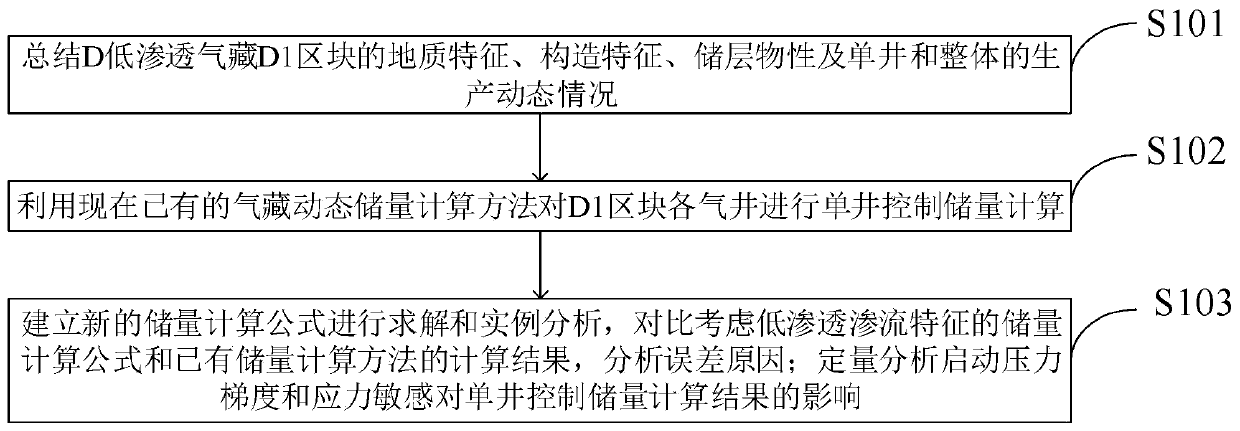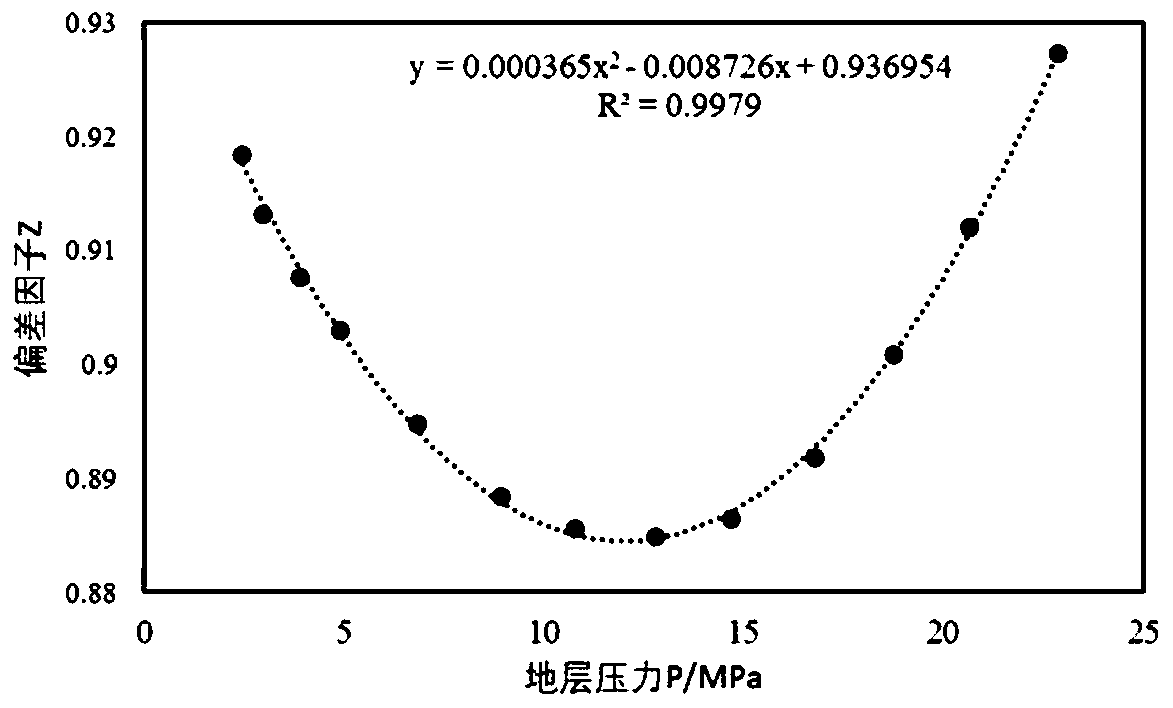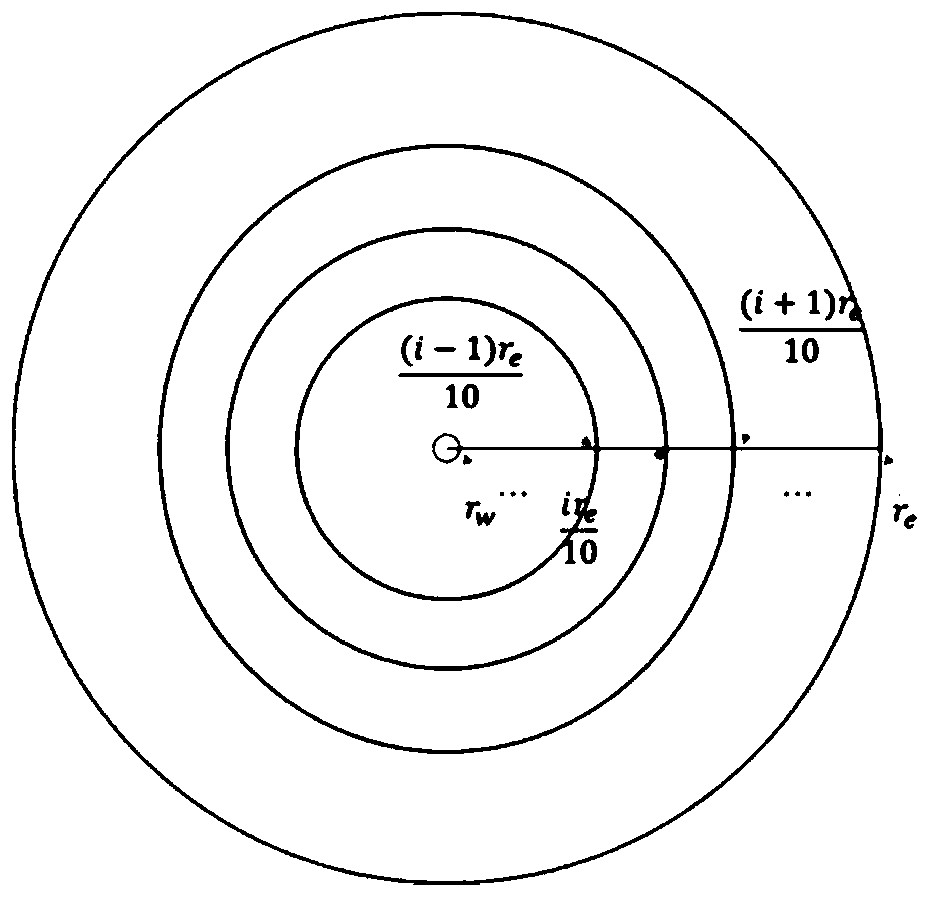Single-well control reserve calculation and residual gas analysis method for low-permeability tight gas reservoir
A technology of reserve calculation and analysis method, which is applied in the field of single well controlled reserve calculation and residual gas analysis in low permeability tight gas reservoirs, and can solve problems such as pressure imbalance, drop, and low single well production.
- Summary
- Abstract
- Description
- Claims
- Application Information
AI Technical Summary
Problems solved by technology
Method used
Image
Examples
Embodiment 1
[0149] Embodiment 1, taking the D1-4 well as an example, analyze the calculation process of the method:
[0150] Well D1-4 is located in the north-central part of Block D1, and started production in July 2005. The production layer is H3-1 layer, and the production layer is 2665m to 2670m. The average porosity of this layer near this well is 12.18%. , the average original permeability is 1.17mD. As of December 2016, wells were shut down for 48 days, and the maximum daily gas production was 1.99×10 4 m 3 / d, the average daily gas production is 0.75×10 4 m 3 / d, cumulative gas production is 0.31×10 8 m 3 .
[0151] The parameters of well D1-4 and the production interval required to participate in the calculation are shown in Table 1. When the permeability is greater than 0.1mD, the slippage effect item in formula (14) can be ignored.
[0152] Table 1: Related parameters of Well D1-4 and the interval produced
[0153]
[0154] Daily gas volume q sc (Unit: 10 4 m 3 / d...
Embodiment 2
[0177] Embodiment 2, influence factors of reserves calculation
[0178] 1. Starting pressure gradient
[0179] In order to study the influence of the threshold pressure gradient on the calculation results of the controlled reserves of a single well, taking Well D1-4 as an example, the maximum permeability damage rate D k3 =22.68%, so that the starting pressure gradient c=0, 0.005, 0.01, 0.02, 0.03, 0.05, 0.08, 0.1, 0.2, 0.3MPa / m in the (14) formula, to obtain the corresponding starting pressure gradient with G p relationship curve as Figure 7 shown.
[0180] By extending each regression line to the abscissa axis, the corresponding dynamic single-well control reserve value under each start-up pressure gradient can be obtained, as shown in Table 2 and Figure 8 shown.
[0181] Table 2: Corresponding dynamic single well control reserve value under each threshold pressure gradient
[0182]
[0183] Such as Figure 8 As shown in the table above, when c<0.02MPa / m, the th...
Embodiment 3
[0192] Example 3, Summary of Calculation of Single Well Controlled Reserves in Block D1
[0193] The controlled reserves of 52 wells in Block D1 are now summarized, as shown in Table 4. Among them, "-" indicates that for a certain well, the error of the method is relatively large or the data does not meet the calculation conditions.
[0194] Table 4: Summary of calculation results of single well controlled reserves of 52 wells in block D1 (unit: 10 8 m 3 )
[0195]
[0196]
[0197] According to Table 2, the total controlled reserves of each single well in block D1 is 30.083×10 8 m 3 .
[0198] The single well controlled reserves of 52 wells in Block D1 were calculated by dynamic method, including 45 wells by material balance method, 46 wells by Fetkovich typical curve method, 52 wells by Blasingame production decline method, and Agarwal- 44 wells were calculated by the Gardner production decline method, 47 wells were calculated by the flow material balance method,...
PUM
 Login to View More
Login to View More Abstract
Description
Claims
Application Information
 Login to View More
Login to View More - R&D
- Intellectual Property
- Life Sciences
- Materials
- Tech Scout
- Unparalleled Data Quality
- Higher Quality Content
- 60% Fewer Hallucinations
Browse by: Latest US Patents, China's latest patents, Technical Efficacy Thesaurus, Application Domain, Technology Topic, Popular Technical Reports.
© 2025 PatSnap. All rights reserved.Legal|Privacy policy|Modern Slavery Act Transparency Statement|Sitemap|About US| Contact US: help@patsnap.com



